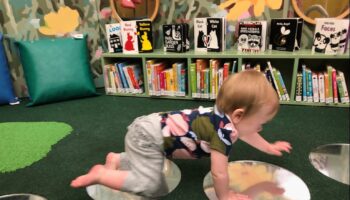Aimee Currier
A few years into my time as a Kindergarten teacher, I realized it was becoming increasingly difficult to maintain order in my classroom. In taking a deeper look at the day-to-day activities, I came to the realization that the children in the class were struggling with some basic social-emotional skills. This was causing disruption, preventing me from teaching, and preventing much of the class from learning. Some of the struggles the children were facing, and the solutions I came up with, follow.
Tattling: The children in the room were repeatedly approaching me with “tattles.” This was something that took a while, but I decided that it was important to teach the children the difference between “tattling” and “telling.” I used conversations and role playing to regularly work on demonstrating the difference between the two. One big emphasis was on stopping and asking, “why am I telling my teacher this?” They slowly began to realize the difference between trying to help and trying to get someone in trouble. They eventually learned that someone scribbling on their paper was a lot different than someone about to jump off a chair. We also worked on appropriate ways the children could express themselves if someone hurt their feelings.
Sharing and taking turns: You’ve likely been given the advice of having multiples of popular games and toys in your classroom. This is great advice and can be helpful. Realistically, unless you are equipped with 20 jump ropes or 15 sets of magnetic blocks, you’re still going to run into times when the children must take turns. Such was the case for me. The magnetic blocks in the classroom were a favorite among all the children in the class. There were plenty to go around, but if they all were using them at the same time, they couldn’t really build significant structures (and they loved trying to build towers taller than each other). For this and other popular items and activities, I implemented a sign-up sheet. This served a few purposes, including name writing and recognition. On a social level, it taught the children that sometimes we must take some time to wait and let others finish before it’s our turn. (Trust me. This is a skill that will come in handy in adulthood).
Sitting and attending: I noticed that the children really struggled during circle time and table work time. This was frustrating, as there was pressure to “prepare” the children for first grade. The schedule had the children going from sitting at circle time to go over calendar, letters, numbers, and other concepts to moving right to the tables to get started on their “work.” After the work was done, they would have structured play time, with a timer set so they knew when to “switch.” Once I evaluated the schedule and did some research, I realized there might be a more effective way to handle the day-to-day activities. I switched to a play-based way of approaching teaching and learning. Rather than setting out specific learning centers, I allowed the children to choose what they wanted to engage in. I provided enriching and engaging activities for children to do, while also providing the instruction they needed. I turned table work time into games whenever possible. The result? The children were eager to participate in the more structured activities because they knew it would be fun. As the year progressed, I was able to provide longer spans of instruction and increased time at the table working on writing and other motor skills.
You may be wondering about structure. We talk a lot about making sure there is structure in our programs. Remember, structure doesn’t need to equal rigidity. The children in this class quickly learned the expectations and routines of the day. They always knew what came after each activity. As a result, when it came time to clean up (after a 5-minute warning), they were (mostly) happy to put their things away and move on to the next activity for the day. They had structure in the schedule, mixed with flexibility in their choices, and it was effective.
These are just a few of the things that I did to make my classroom run more smoothly. We would love to hear what has worked for you. Feel free to comment below.




